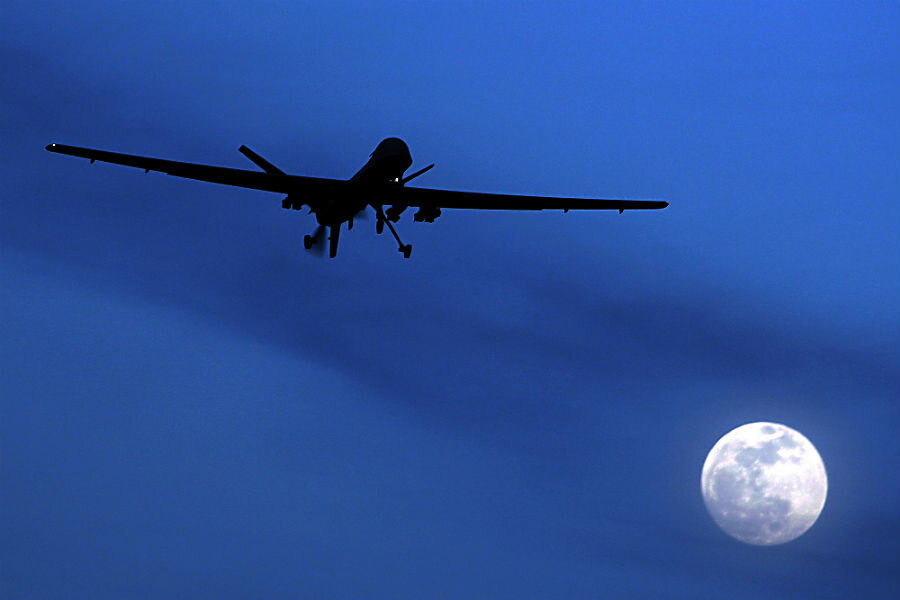Despite promised transparency, US drone policy remains cloudy
Loading...
Despite the government’s pledge to provide “clear guidelines, oversight and accountability” regarding its policy regarding the use of lethal force involving Unmanned Aerial Vehicles (UAVs), or drones, against terrorists, a new report suggests that President Obama’s administration is not being transparent with its approach.
The report was recently released by the nonpartisan, nonprofit Stimson Center, a Washington-based think tank that analyzes global security and economic issues. In the wake of Mr. Obama’s 2013 announcement regarding his hopes for transparency on the United States’ use of lethal drone actions, and his signing of a related use of force policy, Stimson commissioned a task force in 2014 to offer recommendations on how his administration could address the topic.
That group, made up of ten participants from legal, academic, intelligence, business, and military backgrounds, arrived at several conclusions related to US policy and put forward eight proposals to guide Obama’s actions on cementing oversight and accountability for drone actions. The February “report card” issued by Stimson as a follow-up to that effort revealed that the administration has scored poorly so far on implementing the group's suggestions.
“In the months since the task force released its recommendations, there has been virtually no progress and little has changed with regard to US lethal drone policy,” the new report read. “With a year remaining in this administration, this is the last chance to place the program on firmer footing and ensure that it is on a more transparent and accountable track for the next administration.”
Stimson graded the administration’s efforts on a traditional letter-grade scale, with the addition of a “U” grade if the implementation of task force recommendations was unknown. Two "U"s were handed down, one for a cost-benefit analysis of lethal UAV strikes, the other for an assessment of drone technology and future research plans.
The few areas where the Stimson report acknowledged progress were domestic; the review and reform of UAV-related export control rules and FAA requirements both scored C's. The development of international standards related to lethal drone actions, the transference of drone strike operations from the Central Intelligence Agency to the military, and the improved transparency regarding drone strikes all scored D's. And the development of “more robust oversight and accountability mechanisms for targeted strikes” received the lone failing grade.
The report went on to suggest six more steps Obama could consider before leaving office and resetting the mission to establish a “sensible and comprehensive US drone policy.” These include the releases of strategic and cost-benefit review of drone strikes, the legal structure of the system, aggregate data on strikes and their results, and advancing international discussion and planning on the issue.
“The challenge for the Obama administration will be to manage competing priorities, and to balance legal and ethical frameworks with national security and foreign policy concerns in a time of heightened insecurity and increased military actions around the globe,” the report’s authors added. “In short, a sustainable US drone policy should be based on core US values and protect US national security, foreign policy and commercial interests.”






